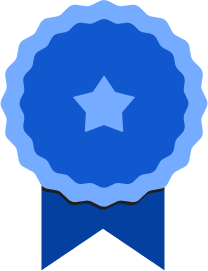Felipe Andrés Torres Haro
회원 가입일: 2023
다이아몬드 리그
25260포인트
회원 가입일: 2023

이 과정에서는 Google Cloud에서 최신 ML 파이프라인 개발을 담당하는 ML 엔지니어와 트레이너로부터 유익한 지식을 배웁니다. 초반에 진행되는 몇 개 모듈에서는 Google의 TensorFlow 기반 프로덕션 머신러닝 플랫폼으로서 ML 파이프라인과 메타데이터를 관리할 수 있는 TensorFlow Extended(TFX)에 대해 다룹니다. 파이프라인 구성요소와 TFX를 사용한 파이프라인 조정을 알아봅니다. 지속적 통합과 지속적 배포를 통해 파이프라인을 자동화하는 방법과 ML 메타데이터를 관리하는 방법도 배웁니다. 그런 다음 주제를 전환하여 TensorFlow, PyTorch, scikit-learn, xgboost 등 여러 ML 프레임워크에서 ML 파이프라인을 자동화하고 재사용하는 방법을 설명합니다. 또한 Google Cloud의 또 다른 도구인 Cloud Composer를 사용하여 지속적 학습 파이프라인을 조정하는 방법도 알아봅니다. 마지막으로 MLflow를 사용하여 머신러닝의 전체 수명 주기를 관리하는 방법을 살펴봅니다.
초급 Google Cloud에서 ML API용으로 데이터 준비하기 기술 배지를 완료하여 Dataprep by Trifacta로 데이터 정리, Dataflow에서 데이터 파이프라인 실행, Dataproc에서 클러스터 생성 및 Apache Spark 작업 실행, Cloud Natural Language API, Google Cloud Speech-to-Text API, Video Intelligence API를 포함한 ML API 호출과 관련된 기술 역량을 입증하세요. 기술 배지는 Google Cloud 제품 및 서비스 숙련도에 따라 Google Cloud에서 독점적으로 발급하는 디지털 배지로, 기술 배지 과정을 통해 대화형 실습 환경에서 지식을 적용하는 역량을 테스트할 수 있습니다. 이 기술 배지 과정과 최종 평가 챌린지 실습을 완료하면 네트워크에 공유할 수 있는 기술 배지를 받을 수 있습니다.
Vertex AI에서 머신러닝 솔루션 빌드 및 배포하기 과정을 완료하여 중급 기술 배지를 획득하세요. 이 과정에서는 Google Cloud의 Vertex AI Platform, AutoML, 커스텀 학습 서비스를 사용해 머신러닝 모델을 학습, 평가, 조정, 설명, 배포하는 방법을 알아봅니다. 이 기술배지 과정은 전문 데이터 과학자 및 머신러닝 엔지니어를 대상으로 합니다. 기술 배지는 Google Cloud 제품 및 서비스 숙련도에 따라 Google Cloud에서 독점적으로 발급하는 디지털 배지로, 기술 배지 과정을 통해 대화형 실습 환경에서 지식을 적용하는 역량을 테스트할 수 있습니다. 이 기술 배지 과정과 최종 평가 챌린지 실습을 완료하면 네트워크에 공유할 수 있는 디지털 배지를 받게 됩니다.
This course describes different types of computer vision use cases and then highlights different machine learning strategies for solving these use cases. The strategies vary from experimenting with pre-built ML models through pre-built ML APIs and AutoML Vision to building custom image classifiers using linear models, deep neural network (DNN) models or convolutional neural network (CNN) models. The course shows how to improve a model's accuracy with augmentation, feature extraction, and fine-tuning hyperparameters while trying to avoid overfitting the data. The course also looks at practical issues that arise, for example, when one doesn't have enough data and how to incorporate the latest research findings into different models. Learners will get hands-on practice building and optimizing their own image classification models on a variety of public datasets in the labs they will work on.
In this course, you apply your knowledge of classification models and embeddings to build a ML pipeline that functions as a recommendation engine. This is the fifth and final course of the Advanced Machine Learning on Google Cloud series.
This course introduces the products and solutions to solve NLP problems on Google Cloud. Additionally, it explores the processes, techniques, and tools to develop an NLP project with neural networks by using Vertex AI and TensorFlow.
이 과정에서는 Google Cloud에서 프로덕션 ML 시스템을 배포, 평가, 모니터링, 운영하기 위한 MLOps 도구와 권장사항을 소개합니다. MLOps는 프로덕션에서 ML 시스템을 배포, 테스트, 모니터링, 자동화하는 방법론입니다. 학습자는 SDK 레이어에서 Vertex AI Feature Store의 스트리밍 수집을 사용하여 실습을 진행하게 됩니다.
이 과정에서는 Google Cloud에서 프로덕션 ML 시스템 배포, 평가, 모니터링, 운영을 위한 MLOps 도구와 권장사항을 소개합니다. MLOps는 프로덕션에서 ML 시스템을 배포, 테스트, 모니터링, 자동화하는 방법론입니다. 머신러닝 엔지니어링 전문가들은 배포된 모델의 지속적인 개선과 평가를 위해 도구를 사용합니다. 이들이 협력하거나 때론 그 역할을 하는 데이터 과학자는 고성능 모델을 빠르고 정밀하게 배포할 수 있도록 모델을 개발합니다.
This course covers how to implement the various flavors of production ML systems— static, dynamic, and continuous training; static and dynamic inference; and batch and online processing. You delve into TensorFlow abstraction levels, the various options for doing distributed training, and how to write distributed training models with custom estimators. This is the second course of the Advanced Machine Learning on Google Cloud series. After completing this course, enroll in the Image Understanding with TensorFlow on Google Cloud course.
이 과정에서는 우수사례를 중심으로 ML 워크플로에 대한 실질적인 접근 방식을 취합니다. ML팀은 다양한 ML 비즈니스 요구사항과 사용 사례에 직면합니다. 팀에서는 데이터 관리 및 거버넌스에 필요한 도구를 이해하고 가장 효과적으로 데이터 전처리에 접근하는 방식을 파악해야 합니다. 두 가지 사용 사례를 위한 ML 모델을 빌드하는 세 가지 옵션이 팀에 제시됩니다. 이 과정에서는 목표를 달성하기 위해 AutoML, BigQuery ML 또는 커스텀 학습을 사용하는 이유를 설명합니다.
이 과정에서는 Vertex AI Feature Store 사용의 이점, ML 모델의 정확성을 개선하는 방법, 가장 유용한 특성을 만드는 데이터 열을 찾는 방법을 살펴봅니다. 이 과정에는 BigQuery ML, Keras, TensorFlow를 사용한 특성 추출에 관한 콘텐츠와 실습도 포함되어 있습니다.
이 과정에서는 TensorFlow 및 Keras를 사용한 ML 모델 빌드, ML 모델의 정확성 개선, 사용 사례 확장을 위한 ML 모델 작성에 대해 다룹니다.
이 과정에서는 먼저 데이터에 관해 논의하면서 데이터 품질을 개선하고 탐색적 데이터 분석을 수행하는 방법을 알아봅니다. Vertex AI AutoML과 코드를 한 줄도 작성하지 않고 ML 모델을 빌드하고, 학습시키고, 배포하는 방법을 설명합니다. 학습자는 Big Query ML의 이점을 이해할 수 있습니다. 그런 다음, 머신러닝(ML) 모델 최적화 방법과 일반화 및 샘플링으로 커스텀 학습용 ML 모델 품질을 평가하는 방법을 다룹니다.
이 과정에서는 예측 및 생성형 AI 프로젝트를 모두 빌드하는 Google Cloud 기반 AI 및 머신러닝(ML) 제품군을 소개합니다. AI 기반, 개발, 솔루션을 모두 포함하여 데이터에서 AI로 이어지는 수명 주기 전반에 걸쳐 사용할 수 있는 기술과 제품, 도구를 살펴봅니다. 이 과정의 목표는 흥미로운 학습 경험과 실제적인 실무형 실습을 통해 데이터 과학자, AI 개발자, ML 엔지니어의 기술 및 지식 역량 강화를 지원하는 것입니다.